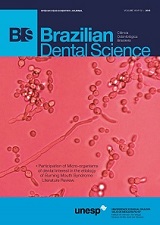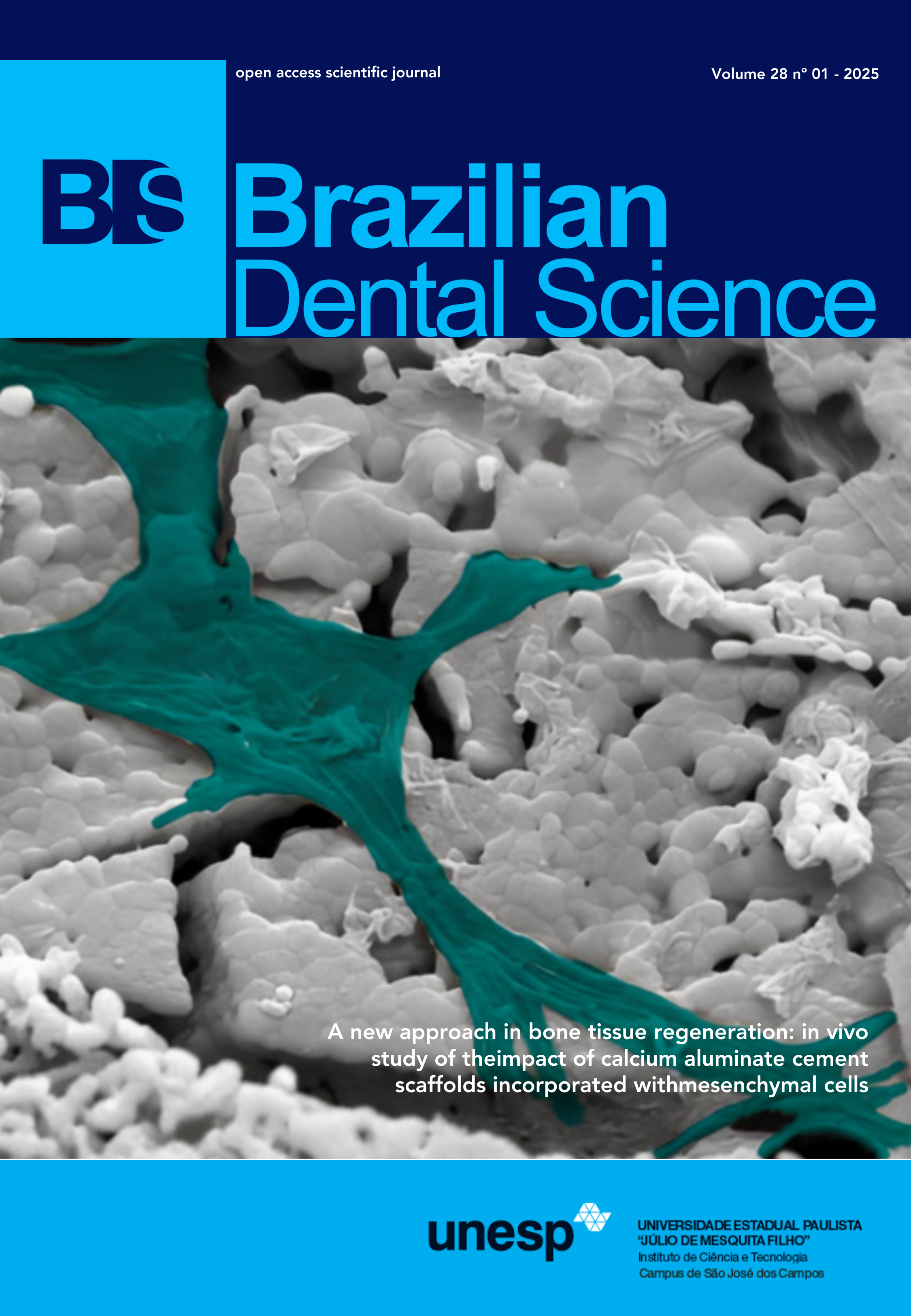Incomplete vertical root fracture associated with lateral compaction technique: a microscopic analysis
DOI:
https://doi.org/10.14295/bds.2013.v16i2.894Resumo
Objective:This study evaluated the effects of root canal obturation employing lateral compaction technique and spreader load of 1.5 kg on the incidence of complete (CVRF) or incomplete vertical root fractures (IVRF). Material and Methods: Twenty-seven distal roots of extracted human mandibular molars were used. All root canals were prepared by biomechanical step-back technique and obturated by lateral compaction technique. The prepared roots were distributed into two groups: G1- experimental (n=17) and G2- control (n=10). During obturation, load of 1.5 kg was applied to a size 30 finger spreader. Pre- and post-obturation images of the coronal portion of the roots were captured by inverted digital microscopy and analyzed by one trained examiner. Data were evaluated by Fisher’s test (p < 0.05) using GrapH Pad Prism 5.0. Results: No roots exhibited CVRF. All fractures observed before and after obturation were IVRF or “other defects”. In G2 (control group), there was no increase of IVRF number. Interestingly, G1 presented an increase in the IVRF number to 70,59% in the 12 teeth out of 17 teeth studied. The statistical analysis showed that the mean of IVRF increased significantly in G1 when compared to G2 (p < 0.05). Conclusions: The application of a 1.5 kg spreader load during lateral compaction technique does not produce complete vertical root fractures, but may produce incomplete fractures or “other defects”.Downloads
Downloads
Arquivos adicionais
Publicado
Como Citar
Edição
Seção
Licença
TRANSFERÊNCIA DE DIREITOS AUTORAIS E DECLARAÇÃO DE RESPONSABILIDADE
Toda a propriedade de direitos autorais do artigo "____________________________________________________________________" é transferido do autor(es) para a CIÊNCIA ODONTOLÓGICA BRASILEIRA, no caso do trabalho ser publicado. O artigo não foi publicado em outro lugar e não foi submetido simultaneamente para publicação em outra revista.
Vimos por meio deste, atestar que trabalho é original e não apresenta dados manipulados, fraude ou plágio. Fizemos contribuição científica significativa para o estudo e estamos cientes dos dados apresentados e de acordo com a versão final do artigo. Assumimos total responsabilidade pelos aspectos éticos do estudo.
Este texto deve ser impresso e assinado por todos os autores. A versão digitalizada deverá ser apresentada como arquivo suplementar durante o processo de submissão.




